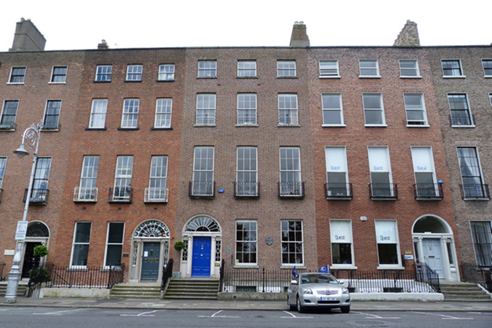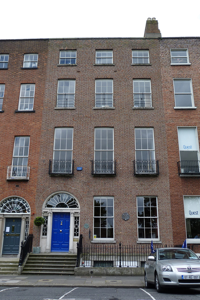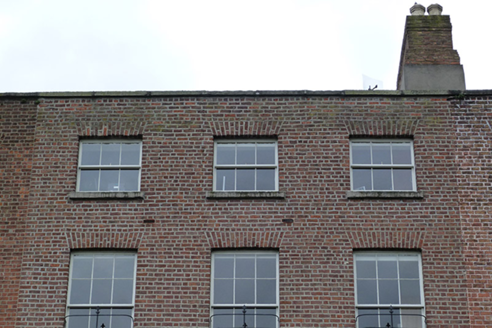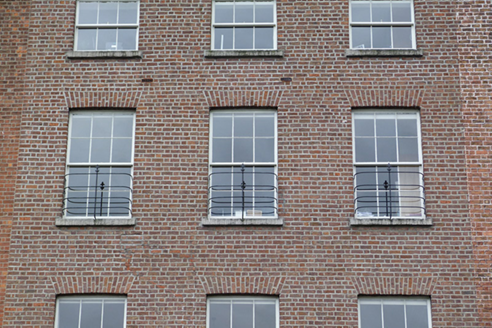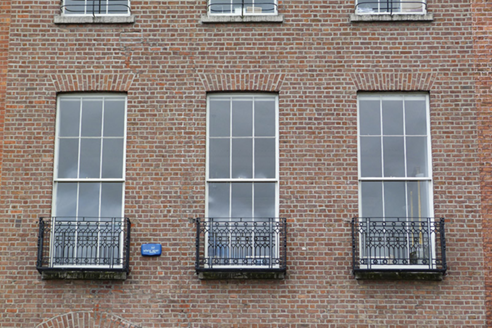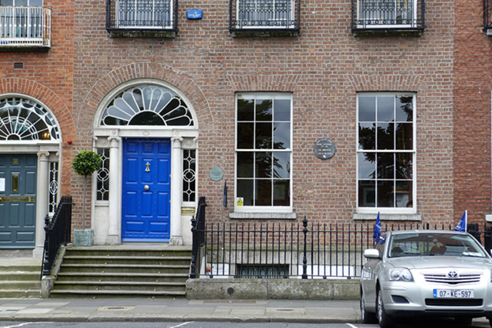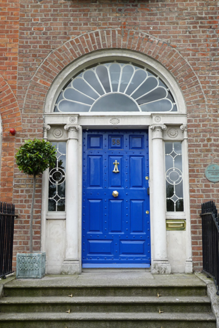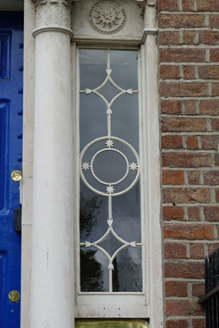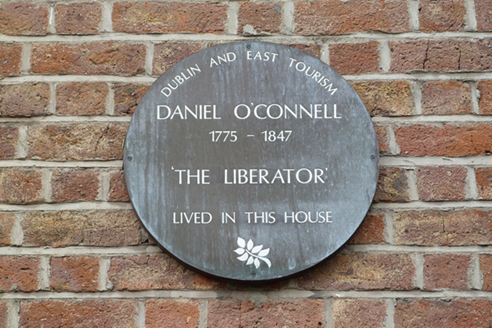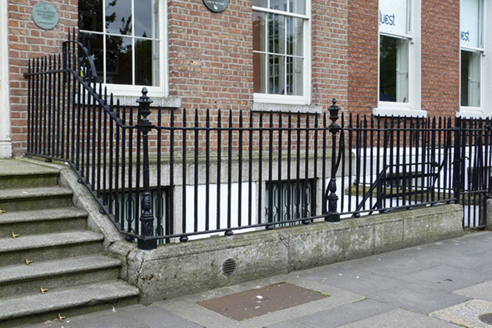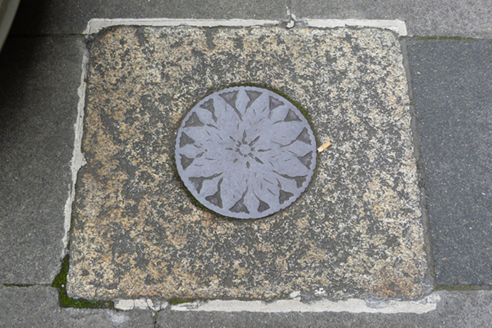Survey Data
Reg No
50100430
Rating
Regional
Categories of Special Interest
Architectural, Artistic, Historical
Original Use
House
In Use As
Office
Date
1785 - 1795
Coordinates
316709, 233418
Date Recorded
05/07/2016
Date Updated
--/--/--
Description
Attached three-bay four-storey former house over basement, built c. 1790 apparently as one in terrace of seventeen, having three-bay two-storey return to rear. Now in use as offices. Pitched slate roof to front, concealed behind brick parapet with granite coping, and two hipped roofs to rear perpendicular to street, larger over western bays. Shouldered brick chimneystacks to west end with clay pots, and concealed rainwater goods. Flemish bond red brick walls on granite plinth course over painted rendered walls to basement. Brick walls, hipped slate roof and timber sliding sash windows to return. Square-headed window openings, diminishing in height to upper floors, with painted granite sills and carved granite block-and-start surrounds to basement. Timber sliding sash windows, three-over-three pane to top floor and six-over-six pane elsewhere, with ornate cast-iron window balconettes to first floor of front elevation, wrought-iron window-guards to second floor of front and rear elevations and recent steel grilles to basement. Round-headed door opening with rendered linings, stepped fluted frieze and moulded cornice with paterae to frieze, engaged Ionic columns with respond pilasters flanking leaded geometric sidelights, petal fanlight and eleven-panel timber door with brass furniture. Granite platform with six bull-nosed granite steps. Wrought-iron railings enclosing basement area with decorative cast-iron posts on moulded granite plinth. Plaque to front wall reads 'Daniel O'Connell 1775-1847 'The Liberator' lived in this house'. Cast-iron coal-hole covers set in granite flags to footpath. Small garden to rear, with carparking beyond and concrete block boundary wall to lane with steel vehicular gate.
Appraisal
No. 58 Merrion Square forms part of the eighteenth-century square developed by the Fitzwilliam Estate. Of historical importance as the townhouse of Daniel O'Connell, and the location of a famous speech he made following his release from gaol in 1844. O'Connell's occupation is a clear indication of the changing fortunes of the Catholic middle class after Emancipation. He was influential in the commissioning of a new Catholic church for the parish, St. Andrew's, Westland Row. The restrained façade is enlivened by its Ionic doorcase, complete with decorative fanlight and sidelights. The railings, balconettes and window-guards also provide visual and craft interest. The return block is a pleasant structure that adds interest to the main building. The building and its setting details contribute significantly to the intact appearance of this important architectural set-piece. The square is one of the best-preserved Georgian streetscapes in Ireland. The north, east and south sides are lined with terraced houses of eighteenth and early nineteenth-century date, while the west side is terminated by the garden front of Leinster House. The houses maintain a relatively uniform building height and design, attributed to standards promoted in Fitzwilliam's leases. Individuality was introduced through the design of doorcases, window ironwork and interior decorative schemes. The south side of Merrion Square was initially set in large plots of twelve leases; plots were leased consecutively from east to west until the row was complete in 1791.
